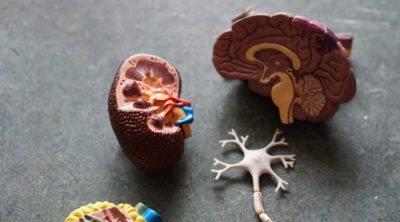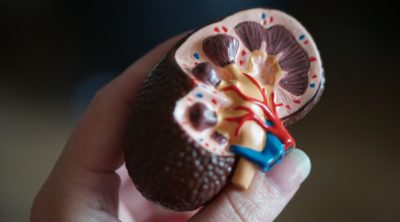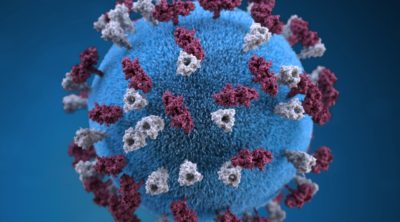
If you are keen to know about the features which make a cardiac muscle different from a skeletal muscle, here is an article giving you a thorough knowledge about the various aspects that are distinguishable between the two of them.
Movement of the human body is possible due to the presence of muscular system. It contributes to almost half of an individual’s body weight. The muscular system consists of numerous muscles that contribute in the movement of the body and certain movements occurring involuntarily within the body like the pumping of the heart etc. Muscles have a unique ability of converting chemical energy stored in the body in the form of ATP to mechanical energy, in the form of movement. There are more than 650 muscles attached to various bones in the body, and there is a specific type of muscle responsible for a particular type of movement. Depending on their specific characteristics, muscles are divided into three categories – Skeletal muscle, Cardiac muscle and Smooth muscle. Skeletal muscles are attached to bones, cardiac muscles are found in the heart and smooth muscles are found in the stomach, gut walls, walls of the blood vessels, and various internal organs of the body. Every muscle is different from the other in various aspects.
So, what is the difference between skeletal muscle and cardiac muscle? Let’s see the various differential factors between the two.
| General Difference | |
| Cardiac Muscle | Skeletal Muscle |
| • Found only in the heart • Involuntarily controlled by autonomic nervous system • Responsible for pumping of the heart • Requires stimulation by pacemaker cells for contraction • Resting membrane potential of cardiac muscle is -90 mV • Has a long refractory period • Speed of conduction of impulse is less than 1 m/s • Muscle fiber diameter is around 10 micrometer and its length is around 50 micrometer |
• Found attached to bones all over the body • Voluntarily controlled by somatic nervous system • Responsible for the movement of bones and cartilage • Requires nerve or hormonal stimulation to generate action potential which results in movement • Resting membrane potential of skeletal muscle is -80 mV • Has a short refractory period • Speed of conduction of impulse is 3 – 5 m/s • Muscle fiber diameter is up to 100 micrometer and its length is up to 200 millimeter |
| Structural Difference | |
| Cardiac Muscle | Skeletal Muscle |
| Cardiac muscle is a straited muscle with alternate thin and think striations along with intercalated discs and T-tubules. The striations consist of proteins. The thin striations are known as I-bands, while the thick ones are known as A-bands. The T-tubules form the triads, and the intercalated discs connect the cardiac myocyte to synctium. | Skeletal muscle is a striated muscle attached to a bone by collagen fibers known as tendons. It contains actin and myosin, and the muscle fibers are formed by the coalition of myoblasts present. |
| Cellular Characteristics | |
| Cardiac Muscle | Skeletal Muscle |
| • It is short in length • It has a ‘semi-spindle’ shape • Muscle cells are connected side-by-side and are not tightly bound • Contractions of muscle cells are interdependent • Gap junctions are present in cardiac muscle cells • Muscle cell has only 1-2 nuclei • Has a dense endomysium • Mitochondria occupies around 25% space in the cell and is richly supplied with blood vessels • Contains few and wide T-tubules • T-tubules are aerobic • Myofibres are fused at the ends |
• It is longer in length • It has a cylindrical shape • Branched cells are connected via intercalated discs • Cells have common contraction known as synctium • There are no gap junctions in skeletal muscle cells • Skeletal muscle cell is multi-nucleated • Has less dense endomysium • Mitochondria occupies around 2% space and is not so richly supplied with blood vessels • Contains more number of T-tubules • T-tubules can be aerobic or anaerobic • Myofibres are not fused |
| Functional Difference | |
| Cardiac Muscle | Skeletal Muscle |
| • It contracts without neural stimulation • Timing of stimulation is determined by specific cells known as the pacemaker cells in the heart • Cardiac muscle contractions last ten times longer than skeletal muscle contractions • Cardiac muscle is sensitive to extracellular calcium ion • Has less speed of contraction |
• It contracts with neural stimulation • Timing of stimulation is determined by action potential in a skeletal muscle • Skeletal muscle contractions last for short time period • Skeletal muscle is not sensitive to extracellular calcium ion • Has faster speed of contraction as compared to cardiac muscle |
From the above information it is clearly evident that the two types of muscles discussed in this article are in no way similar to each other. Their characteristics are specific to their function. Hope this article has helped you in getting a clear picture about the functional and structural difference between cardiac and skeletal muscle.


